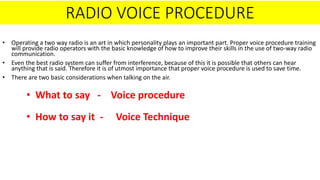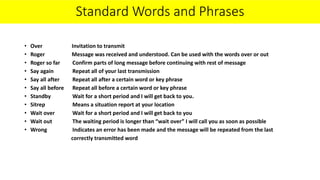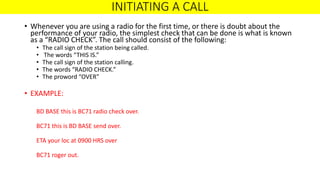The document provides guidance on proper radio voice procedure and techniques. It discusses considerations for talking on the air such as using voice procedure and proper technique. It emphasizes the importance of being brief, clear, and disciplined when communicating over radios. Standard words and phrases called prowords are defined that have special meanings to facilitate efficient radio communication. The phonetic alphabet is also described for clearly spelling words over the radio. Proper initiation of calls is outlined using standard call signs and prowords.







